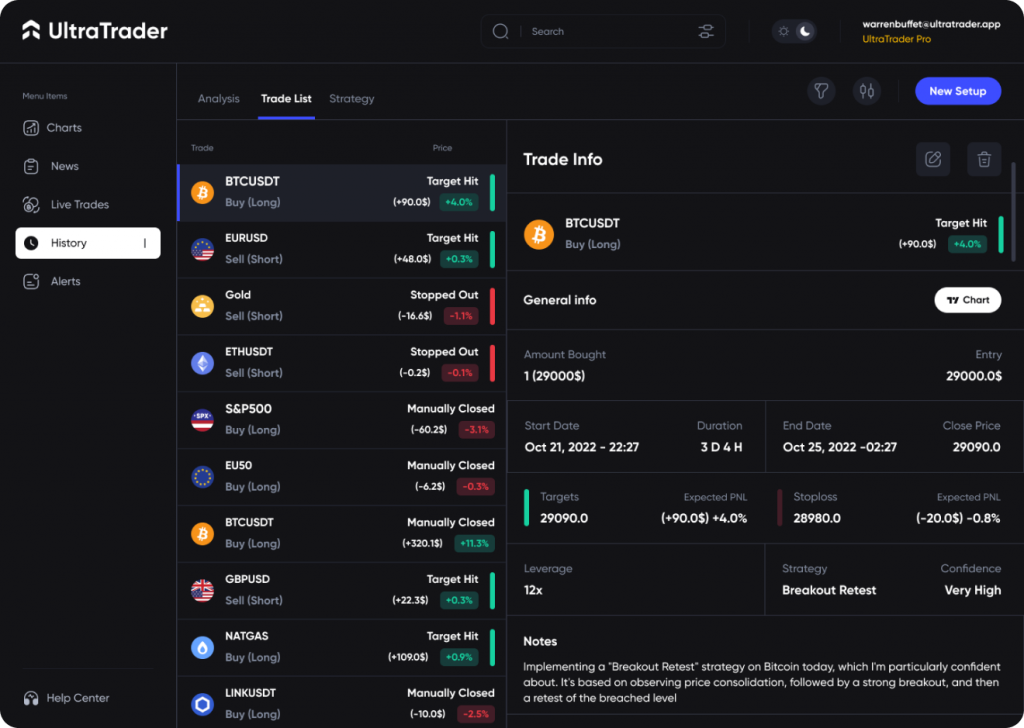- Have you ever been sure of your trading methodology, but failed to find consistent profit with it?
- Have you studied different analytical methods, but aren’t exactly sure which one suits your trading style best?
- Do you repeat some of the same mistakes in your trading over and over again?
These are common problems; most traders have the knowledge to be profitable in the financial markets, But making a profit in the market is not necessarily achieved by mastering the technical rules and analytical methods.
Technical Analysis is only one piece of the profitability puzzle.
Another important piece of this puzzle is using a proper trading journal.
Almost all successful traders use an accurate and thorough trade journal to review and optimize their performance and also to find profitable or unprofitable patterns in their trades.
In this article, we will discuss trade journals, the reasons for their importance, the results of their use, and how you can start today!
What is a Trading Journal?
A trading Journal is a record of your trades with all the details, including symbol, date and time, entry points, exit points, trade direction, trade volume, reasons for entering the trade, trade result, etc.
Why do you need a Trading Journal?
Registering all your trades gives you a general perspective that will help you find your profitable or unprofitable patterns and optimize your trading system.
As long as you don’t have a trading journal and a clear understanding of all your trades, you won’t get to know the strengths and weaknesses of your trading system.
With the help of a trade journal, you can have a solid framework for your trading system and prevent emotional trading. Also, you can optimize your trading system by doing more of what works and less of what doesn’t
Elements of a Trade Journal

Date and time
In a trading journal, all trades must have the exact date and time of entry and exit because:
1- It gives you the ability to sort and review your trades from a specific time period.
2- It gives you a sense of the average duration that your positions are open.
3- You can zoom in on a particularly underperforming period and try to find the reason your strategy failed during that time. This can also be applied to high-performing periods in order to spot the strengths.
Traded Symbols
Registering the traded symbols helps you to:
1- Understand which symbols you are focusing more on.
2- Find out in which of the symbols you had more successful trades based on the win rate. This item is very useful for optimizing your trading system.
3- Access the trades of a specific symbol and measure your performance.
Trade Side (Buy or Sell)
Registering the side of your trades allows you to:
1- Know whether you were a buyer or a seller in that period of time.
2- Analyze how you perform when trading long or short.
Entry and Exit Points
Registering Entry, Stop loss, and Target in each trade allows you to:
1- See how many of your transactions were in your ideal entry point and how many were early or late entries. This practice is highly effective in strategy optimization.
2- Analyze whether your stop losses were unnecessarily risky (too wide) or too tight and not leaving the position enough room before the predicted move happened.
3- Check whether you should decrease your target prices so more trades are profitable or increase the target and gain more per each winning trade.
4- Accurately calculate your R/R ratio.
Trade Amount or Quantity
Registering the quantity involved in each trade lets you:
1- Calculate your P&L.
2- Calculate your ROI.
3- Check whether there is a correlation between the quantity involved in the trade and the overall win rate.
4- Optimize your trading system’s capital management.
Notes and Strategy
one of the Traders’ favorite things in trading journals is writing the reasons for opening each trade.
This helps the trader to:
1- Analyze which strategy has the best win rate.
2- Optimize the trading system based on profitable attributes.
Trade Result
One of the most important elements of trading journals is the trading result.
This helps you to filter your trades based on whether they are profitable or unprofitable so that you can find their main causes.
example: when you check your journal, you may see that most of the trades that were stopped out, had happened when you were trading against the trend and this is a point that you had not paid attention to before.
Start Journaling Today with UltraTrader

If you’re serious about taking your trading to the next level, understanding the power of a trading journal is just the beginning. UltraTrader provides an advanced trading journal and equips you with the tools, insights, and analytics to make confident, data-driven decisions. It’s time to trade like the pros, and with UltraTrader, you’re never alone in your journey toward trading mastery.
Ready to start your UltraTrader experience? We invite you to join our community of ambitious traders who are redefining success in the markets. Click here to sign up for UltraTrader and embrace a new era of trading excellence. Let’s transform your trading ambitions into reality, one trade at a time.










